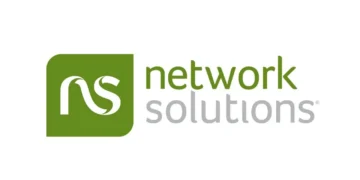Can putting your money to work also help communities and the environment while still earning returns?
Impact investing began as a term in 2007 to describe an approach that pairs measurable social goals with financial discipline. This guide explains how intentional choices, clear metrics, and active management apply across asset types—from municipal bonds to venture capital.
We focus on U.S. practice and practical steps: how to set goals, compare strategies like ESG and SRI, and build a diversified portfolio that balances mission and market rigor.
Heightened attention to climate, community resilience, and equity means more products, better data, and clearer paths to act with your money. Readers will learn to allocate between public and private markets, choose managers, and use tools from municipal finance to targeted venture investment.

Key Takeaways
- Impact investing aligns clear social environmental impact goals with financial planning.
- Intentionality and measurement matter across asset classes.
- U.S. examples include municipal bonds, affordable housing, and community finance.
- Expect to balance mission-driven choices with portfolio and risk management.
- Practical tools help avoid greenwashing and improve accountability.
What Is Impact Investing and Why It Matters Today
Today’s approach to purposeful capital links measurable goals and financial expectations across many markets.
Defining intent and financial return
Impact investing is an intentional strategy that sets clear social and financial objectives up front. It is not a single asset class but a spectrum of structures and asset types that aim for measurable outcomes.
Measurement and active management
Key features are explicit intention and rigorous measurement. Practitioners use frameworks that connect a company or project’s activities to verified results and learning cycles.
Financial return is part of the design and can range from concessionary to market-rate, chosen to match mission and risk tolerance.
Breadth and real-world use
Applications span fixed income, equity, real assets, and alternatives—municipal bonds for stormwater resilience and low-interest mortgages are common examples.
With pressing social environmental needs and better data, this approach helps hold managers accountable while offering transparent risk/return profiles.
Who Is an Impact Investor
From small savers to large funds, many entities shape finance to generate measurable community benefits. Virtually any organization that sets intentional social goals alongside financial targets can qualify as an impact investor.
From individuals to institutions
Profiles range from retail investors using screened mutual funds to family offices and fund managers placing private capital. Banks and CDFIs channel deposits and credit into underserved neighborhoods, linking lending to measurable community outcomes.
Foundations and others that go beyond grants
Foundations increasingly use program-related and mission-related vehicles. They offer patient, risk-tolerant capital to de-risk projects and attract private co-investors in blended capital stacks.
Governments and nonprofits can add guarantees or first-loss tranches to unlock development finance for housing, small business, and health. Insurers and diversified firms often invest through municipal bonds and mortgages with clear use-of-proceeds.
Fiduciary rules matter for pension funds and pension plans. When structured carefully, mission-aligned strategies can meet beneficiaries’ goals without sacrificing returns. Strong governance, staffing, and local partnerships are essential to source, monitor, and measure success.
Impact Investing vs ESG vs SRI: Understanding the Differences
Choosing between exclusion screens, company risk analysis, or outcome-driven capital affects both returns and real-world change.
SRI exclusions compared to ESG analysis
Socially responsible investing (SRI) typically filters out specific sectors or companies—like tobacco or certain weapons—to match ethical preferences.
By contrast, ESG evaluates how companies manage environment, social, and governance risks and opportunities to inform security selection in funds.
Outcome focus and reporting
Outcome-driven strategies intentionally direct capital to projects or companies designed to produce measurable results, such as emissions cuts or affordable housing units.
ESG reports often show policies and metrics, while true impact investment aims to link activities to measured outcomes and disclose assumptions.
How capital drives change
Shareholder engagement in public markets nudges company behavior, whereas private investments can shape products and services directly to achieve social goals.
Many funds blend approaches, so read mandates closely to tell risk-focused ESG from outcome-focused impact. Standardized frameworks help reduce greenwashing and improve comparability.
U.S. Market Snapshot: Current Trends and Capital Flows
Fund flows shifted after strong momentum from 2019–2021. In 2023 U.S.-based ESG funds saw roughly $13 billion in net outflows, the first annual decline in more than a decade.

Outflows continued into the first three quarters of 2024 but at a slower pace. That suggests the broad ESG wave has cooled, not collapsed.
Where money still flows
Two climate-focused ETFs and some targeted renewable energy strategies bucked the trend and logged net inflows. These funds show investors still place a premium on climate and transition themes.
Why flows changed
Drivers include increased political scrutiny, confusion over ESG methodologies, and uneven company disclosures. Those factors made some buyers step back.
What this means for impact investing
A mandate centered on measurable outcomes and transparent use-of-proceeds can stand apart from generic screens. Check a fund’s holdings, reporting cadence, and outcome metrics to judge whether climate change and environment goals are credibly pursued.
Resilient sectors include climate infrastructure, grid upgrades, and energy efficiency. Public funds and ETFs give liquidity for tactical moves, while private infrastructure funds may better match long time horizons for buildout.
For pension plans, governance and clear policy determine how to balance fiduciary duty with mission goals and target return. In a shifting market, prioritize managers with consistent mandates, transparent impact reporting, and strong risk controls.
Impact Investor Strategies and Return Profiles
Different approaches balance social outcomes and payouts, shaping what returns and risks look like in practice.
Concessionary versus market-focused approaches
Concessionary strategies use patient capital, guarantees, or first-loss layers to seed markets or serve underserved communities. They may accept below-market paybacks to catalyze systems change.
Non-concessionary funds aim for market-rate returns while embedding a clear impact thesis, active oversight, and measurable KPIs.
Blended finance and practical examples
Blended finance pairs junior philanthropic tranches with senior private capital to lower risk and unlock scale. Examples include credit enhancements for affordable housing, revenue-backed loans for community health, and structured equity in climate pilots.
Underwriting, governance, and exits
Underwriting differs: concessionary deals stress stakeholder benefits; market-return deals focus on cash flow and risk-adjusted return with impact KPIs. Strong governance—impact committees, independent evaluation, and aligned incentives—helps preserve both mission and financial return.
Clarify liquidity needs, exit paths, and how outcomes will be sustained after exit when selecting vehicles across public and private markets.
Asset Classes and Instruments for Impact
Different instruments let capital flow to social and environmental projects while aiming for returns. Understanding each wrapper helps match liquidity, fees, and oversight to your goals.
Equity and venture capital
Public equity strategies use themed indices, shareholder engagement, and active selection to pursue clear KPIs. A screened ESG stock portfolio can track carbon metrics while seeking growth through listed companies.
Venture capital funds scale innovations—from clean energy hardware to health tech—where capital investment shapes product development and market adoption.
Loans, municipal bonds, and community finance
Fixed-income tools include loans to community lenders, social bonds, and municipal bonds with use-of-proceeds for community development. For example, a muni issuance can fund energy efficiency retrofits in schools, while a low-interest loan expands affordable homeownership.
Funds, ETFs, and private vehicles
Mutual funds and ETFs offer liquid exposure but differ in reporting and impact depth. Private funds—private credit, private equity, and real assets—can add covenants and impact-linked terms for closer monitoring.
Allocate core fixed income for stability, equity for growth, and alternatives for differentiated return drivers. Always verify use-of-proceeds, pipeline credibility, and post-investment monitoring as part of due diligence.
Priority Themes: Climate Change, Renewable Energy, and Infrastructure
The push to decarbonize power, transport, and industry is reshaping capital flows for decades to come.
Energy transition and climate resilience
Transition finance centers on renewable deployment, grid modernization, and storage to support cleaner power. Projects track capacity factors and avoided emissions as core metrics.
Resilience financing covers water systems, flood mitigation, and heat adaptation. Municipal bonds and project-level vehicles often fund these upgrades with measurable indicators for resilience.
Water, pollution, and biodiversity considerations
Programs that cut pollution and restore habitat deliver co-benefits for the environment and public health. Metrics should include water quality improvements, restored acreage, and emissions avoided.
Building affordable, resilient infrastructure
Blended finance, green bonds, and sustainability-linked loans can de-risk first-of-a-kind assets. Venture capital plays a role too, backing early-stage climate tech that improves efficiency or materials.
Place-based development channels development to disadvantaged communities, aligning federal and state incentives to lower utility costs and expand transit access.
Risk and reporting matter: permitting timelines, technology readiness, and incentive stability shape underwriting. Combine mitigation and adaptation across allocations to balance returns and real-world outcomes.
Social Outcomes: Community Development and Inclusive Growth
Well-designed community programs channel capital to neighborhoods that need housing, health services, and job training. These efforts combine public grants, private investments, and local partners to meet measurable goals.
Affordable housing and first-time homeownership
Goal-driven development increases affordable units and expands first-time homeownership through low-interest mortgages and down-payment assistance. Rehab loans and small-balance commercial loans finance neighborhood small businesses while managing credit risk with trusted local lenders.
Health, education, and workforce development
Financing clinics, community health centers, and school facilities creates steady cash flows and social benefits. Workforce programs that align curricula with regional employers improve job placement and earnings. Track completion rates and employer hires to measure success.
Measure DEI outcomes with metrics like minority homeownership rates, clinic access, and training completions. Pension funds and other institutional investors can allocate to place-based vehicles that deliver stable returns while advancing equitable outcomes.
Community engagement shapes priorities, underwriting, and impact metrics to avoid displacement. Safeguards—affordability covenants, tenant protections, and service commitments—help sustain results. Disaggregated reporting clarifies who benefits and supports accountability for social environmental goals.
Measuring Impact: Frameworks, Data, and Outcomes
Measuring social and environmental results starts with clear goals and usable data, not vague statements. A concise theory of change and baseline measures make targets time-bound and verifiable.
Setting clear, intentional goals
Translate mission into specific, measurable objectives—e.g., cut company carbon by X% in three years or add Y affordable units by year two. Use a baseline, timelines, and a short list of core KPIs to keep reporting focused.
Tracking environmental and social indicators
Select material indicators like emissions, energy efficiency, affordability, access to services, and diversity metrics. Favor measures that are feasible to collect and tie plausibly to long-term outcomes rather than simple output counts.
Navigating data gaps and evolving ratings
Company carbon reporting is improving, while many social metrics lack consistency. Morningstar’s impact ratings only date to 2016, so use third-party evaluations, certifications, and assurance to strengthen credibility.
Practical tips: link outcomes to financial performance, embed KPIs into fund docs, avoid double counting across portfolio rollups, and adopt open taxonomies to ease aggregation and reduce reporting burdens.
Due Diligence and Avoiding Greenwashing
Not every green label means a fund delivers measurable social or environmental change. Scrutiny is needed to separate marketing from measurable outcomes. A short, structured diligence process helps you confirm whether reported progress reflects real change.
Assessing intention, strategy, and track record
Clarify the impact thesis: ask what target populations or environmental goals the fund pursues and how capital produces results. Review whether the mandate, pipeline, and team capabilities align.
Track record: verify that the fund has documented outcomes linked to execution. For an investment fund, check prior exits, case studies, and third-party evaluations.
Qualitative and quantitative verification
Measurement systems: test data quality, collection frequency, and third-party assurance. Use KPIs plus case studies to triangulate claims.
Portfolio checks: scrutinize holdings and use-of-proceeds to ensure the company-level activity matches stated goals. Compare results to sector benchmarks to spot overstatement.
Governance and legal safeguards
Evaluate governance: dedicated committees, incentives tied to impact KPIs, and clear escalation when targets are missed. Review legal docs for covenants and reporting obligations that bind managers in finance and practice.
Building an Impact Portfolio in the United States
A practical portfolio blends liquid public funds with targeted private deals to match mission depth and cash needs.
Allocating across public and private markets
Start with a rule-based split: public equities and green bond funds for liquidity and transparency, private equity or infrastructure for deeper outcomes. Match allocation to impact depth, expected returns, and liquidity needs.
Integrating into pension and endowment assets
Update policy statements to include mission-aligned benchmarks, manager guidelines, and allowable vehicles. Pension plans and pension funds should document fiduciary rationale and reporting cadence.
Risk management, time horizon, and liquidity
Use concentration limits, scenario analysis, and liquidity buckets for commitments, loans, and equity. Pace private commitments to manage J-curve effects and keep cash for capital calls.
Governance matters: create an oversight committee, set a reporting calendar, require external assurance, and roll up manager KPIs into a unified framework to track aggregate progress and returns.
How to Get Started: Practical Steps for New Impact Investors
Getting started means clear choices that tie values to measurable outcomes and financial discipline. Use a short plan to move from intent to action without overcommitting capital.

Clarify values, themes, and return targets
Begin by naming 2–3 themes—climate resilience, affordable housing, or education—and set a target return range for each. Decide whether you expect market-rate returns or will accept concessionary terms for catalytic goals.
Select managers, funds, or direct investments
Match vehicle type to your capacity: public funds for liquidity, private funds for deeper outcomes, or direct investment for hands-on oversight. Shortlist managers with clear pipelines, verified results with companies, and transparent fees.
Practical steps: size an initial allocation of money, pilot a small sleeve, and set a measurement plan with baselines and cadence. Add governance rules for approvals, conflicts, and reporting. Review performance and scale when data show both social and financial goals are met.
Conclusion
Aligning capital with clear social and environmental goals is now a practical path, not just an aspiration.
As an impact investor, you can pair measurable objectives with disciplined financial management to pursue returns while supporting climate, energy, and community development.
Set specific goals, pick suitable vehicles—funds, equity stakes, loans, or project finance—and validate managers’ track records and reporting systems.
Markets have shifted, yet targeted climate and infrastructure strategies remain resilient. Rigorous due diligence helps separate authentic impact investments from marketing claims.
Take a long view: some benefits unfold over time. Review current allocations, identify gaps, and create a roadmap to scale capital investment that serves people and the environment.
FAQ
What does it mean to invest for social and environmental outcomes?
It means directing capital to companies, projects, or funds that aim to deliver measurable social or environmental benefits alongside a financial return. Investors set clear goals, use metrics to track progress, and manage capital to drive positive change in areas like renewable energy, community development, or workforce training.
How is this approach different from ESG screening or socially responsible investing?
Screening and ESG analysis typically assess risks and practices—avoiding harmful sectors or evaluating governance. This approach prioritizes measurable, intentional outcomes as part of the investment thesis. The focus shifts from risk mitigation to actively funding solutions that produce verifiable improvements in climate, health, or equity.
Who participates in these strategies?
Participants range from retail investors and family offices to banks, foundations, pension funds, and development finance institutions. Foundations increasingly blend grants with capital deployment to scale solutions, while public pensions and endowments explore allocations to meet stakeholder demands for social and environmental results.
What returns should investors expect?
Return expectations vary by strategy. Some opportunities target market-rate returns, particularly in private equity or venture capital focused on clean technology. Others accept concessionary returns for high social value, such as deeply affordable housing or community loans. Blended finance structures can help attract commercial capital into higher-impact deals.
Which asset types are commonly used?
Investors use a mix of equity, venture capital, debt instruments, municipal bonds, and pooled funds or ETFs. Community development financial institutions and municipal issuance are common for local projects, while venture funds back early-stage clean-tech companies addressing the energy transition and resilience.
How do investors measure outcomes?
Measurement relies on clear targets, standardized indicators, and regular reporting. Common tools include IRIS+, SDG-aligned metrics, and sector-specific KPIs for emissions reductions, jobs created, or housing units preserved. High-quality data, third-party verification, and baseline assessments help validate progress.
What are the main risks and how can greenwashing be avoided?
Risks include weak measurement, overclaiming results, and misaligned incentives. Rigorous due diligence—reviewing strategy, historical performance, governance, and verification—reduces risk. Demand transparent reporting, independent audits, and contracts that tie incentives to verified outcomes to avoid misleading claims.
How is the U.S. market trending right now?
Flows have shifted since 2023, with some broad ESG outflows moderating through 2024 while climate-focused funds attracted capital. Interest in renewable energy, resilient infrastructure, and community finance remains strong as allocators reassess exposure and concentrate on measurable outcomes.
What themes are top priorities for capital deployment?
Climate change mitigation and adaptation, renewable energy deployment, resilient infrastructure, water and biodiversity conservation, and inclusive economic development are frequent priorities. Investors often target affordable housing, healthcare access, and workforce programs to deliver combined social and environmental benefits.
How should a newcomer build a portfolio aligned with these objectives?
Start by clarifying values, time horizon, and return targets. Allocate across public and private markets to balance liquidity and impact. Choose managers with proven track records, demand robust metrics, and consider blended finance or pooled funds to diversify risk while supporting priority themes.
What role do pension funds and large institutions play?
Large institutions can deploy substantial capital and set market norms. They integrate outcome-focused allocations into portfolios, use scale to support infrastructure and renewable projects, and influence managers through stewardship and reporting demands. Their participation can mobilize private capital at scale.
How do blended finance structures work?
Blended finance combines concessional capital (grants or first-loss funding) with commercial capital to improve risk-return profiles for projects that deliver public benefits. This approach helps crowd in private investors to early-stage infrastructure, energy transition projects, and community-scale initiatives.
Where are data and ratings still limited?
Gaps remain for long-term outcome tracking, especially in social metrics like workforce mobility or community cohesion. Ratings for environmental performance can vary by provider. Investors should triangulate sources, use baseline studies, and prioritize projects with measurable, verifiable indicators.
How can small investors participate?
Small investors can access themed ETFs, community development funds, donor-advised funds, or crowdfunding platforms that focus on renewable energy and community projects. Look for transparent fees, clear impact metrics, and managers with verifiable track records.
What due diligence questions should I ask fund managers?
Ask about intentionality of goals, specific metrics used, historical outcomes, verification methods, and fee structures. Inquire how investments map to climate or social targets, the manager’s governance, and examples where capital led to measurable, sustained benefits.





